The Galleria Borghese, housed in the historic Villa Borghese in Rome, is one of the most prestigious art museums in the world. Villa Borghese was commissioned by Cardinal Scipione Borghese in 1606. Its design was led by architects Flaminio Ponzio and later Giovanni Vasanzio, who transformed the site into a luxurious suburban estate. Cardinal Borghese, an avid patron of the arts, filled the villa with masterpieces by artists such as Caravaggio, Raphael, Titian, and Bernini. In 1902, the Italian state purchased the property, including its art collection, and transformed it into a public museum. The Galleria Borghese officially opened to the public in 1903.
The visit to Galleria Borghese begins in the basement, where the entrance, cloakroom, and gift shop are located. From there, the tour ascends to the main exhibition spaces on the ground and first floors, where the museum’s renowned collection of sculptures and paintings are displayed.
Mariano Rossi Hall (Entrance Hall, Ground Floor)
Imposing in size and lavishly decorated, the room features walls adorned with painted floral and animal motifs and stucco cameos created by artists like Vincenzo Pacetti, Massimiliano Laboureur, and Tommaso Righi. During an 18th-century renovation, the floor was enhanced with a 4th-century CE mosaic depicting hunting scenes and gladiators battling wild animals, originally from a Roman villa on the Borghese estate at Torrenova.
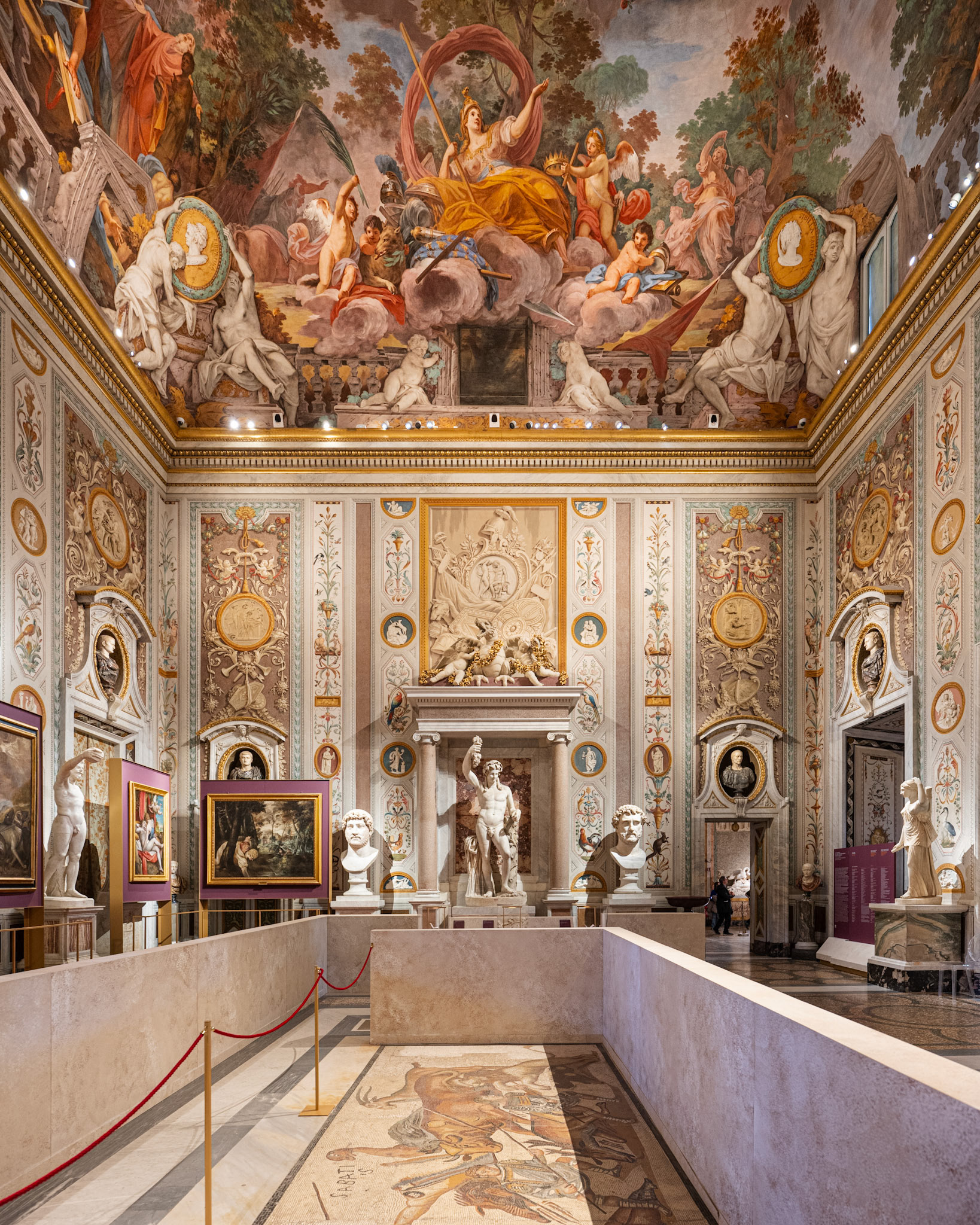
Mariano Rossi Hall with 4th-century CE mosaic
The ceiling fresco celebrates Roman civilization and heroic virtues, centering on the depiction of Romulus being welcomed to Olympus by Jupiter, symbolizing the victory of Furius Camillus over Brennus, king of the Gauls. The subject also commemorates the birth of Marcantonio’s son, Camillo, who later married Napoleon’s sister, Pauline. It was created by Mariano Rossi between 1775 and 1779.

ceiling fresco, Mariano Rossi (1775 - 1779)
Paolina Room (Room 1, Ground Floor)
Redesigned in the nineteenth century under the direction of Luigi Canina, The Paolina Room is home to Antonio Canova's renowned sculpture Paolina Borghese Bonaparte as Venus Victrix, created between 1804 and 1810. The sculpture blends classical grace with naturalistic detail while reclining on an 'Agrippina-style' chaise lounge adorned with intricate drapery that conceals a mechanism allowing the statue to rotate 360°.
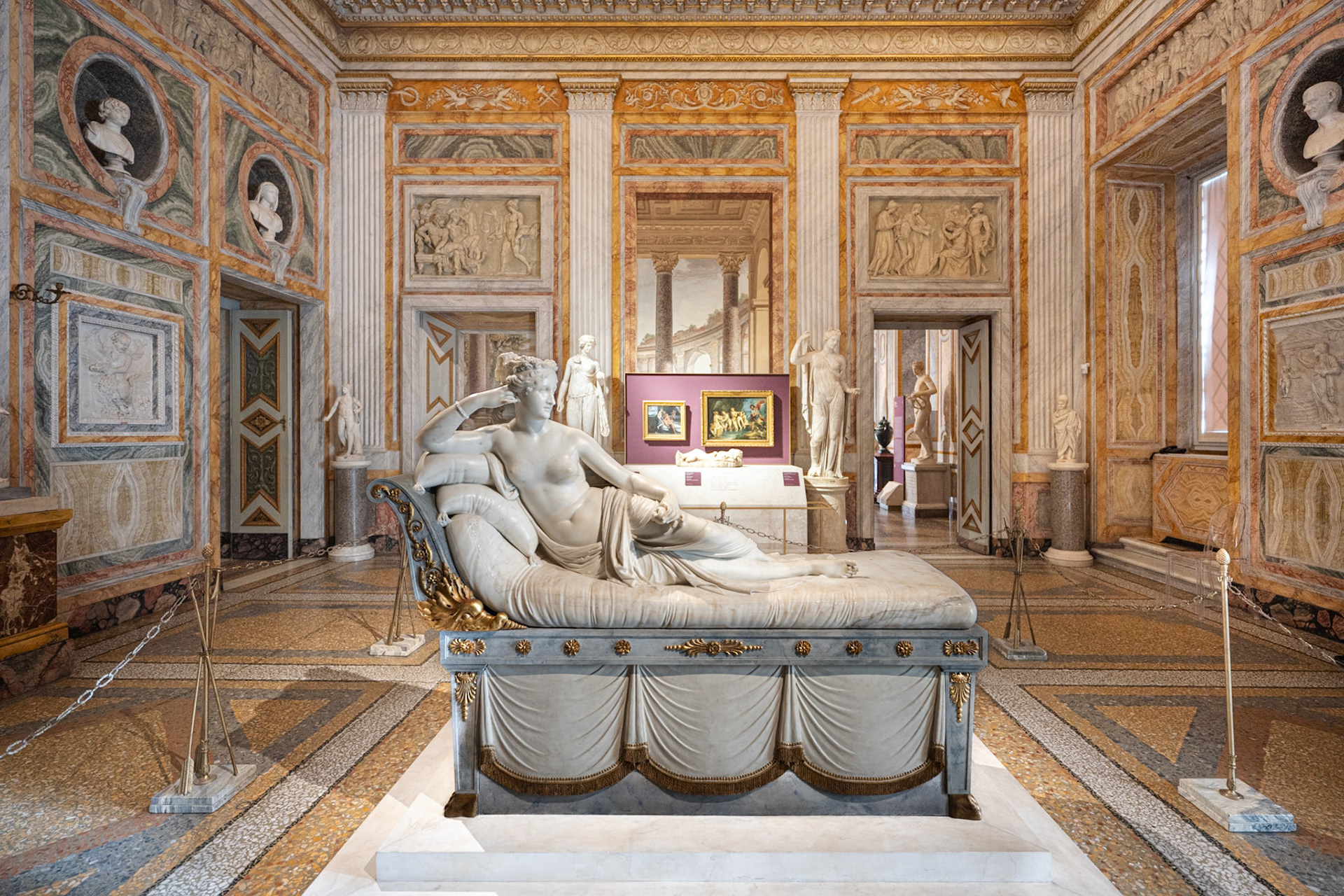
Pauline Bonaparte as Venus Victrix by Antonio Canova (1804-1808)
David Room (Room 2, Ground Floor)
The sculpture David by Bernini is placed at the center of the David Room.
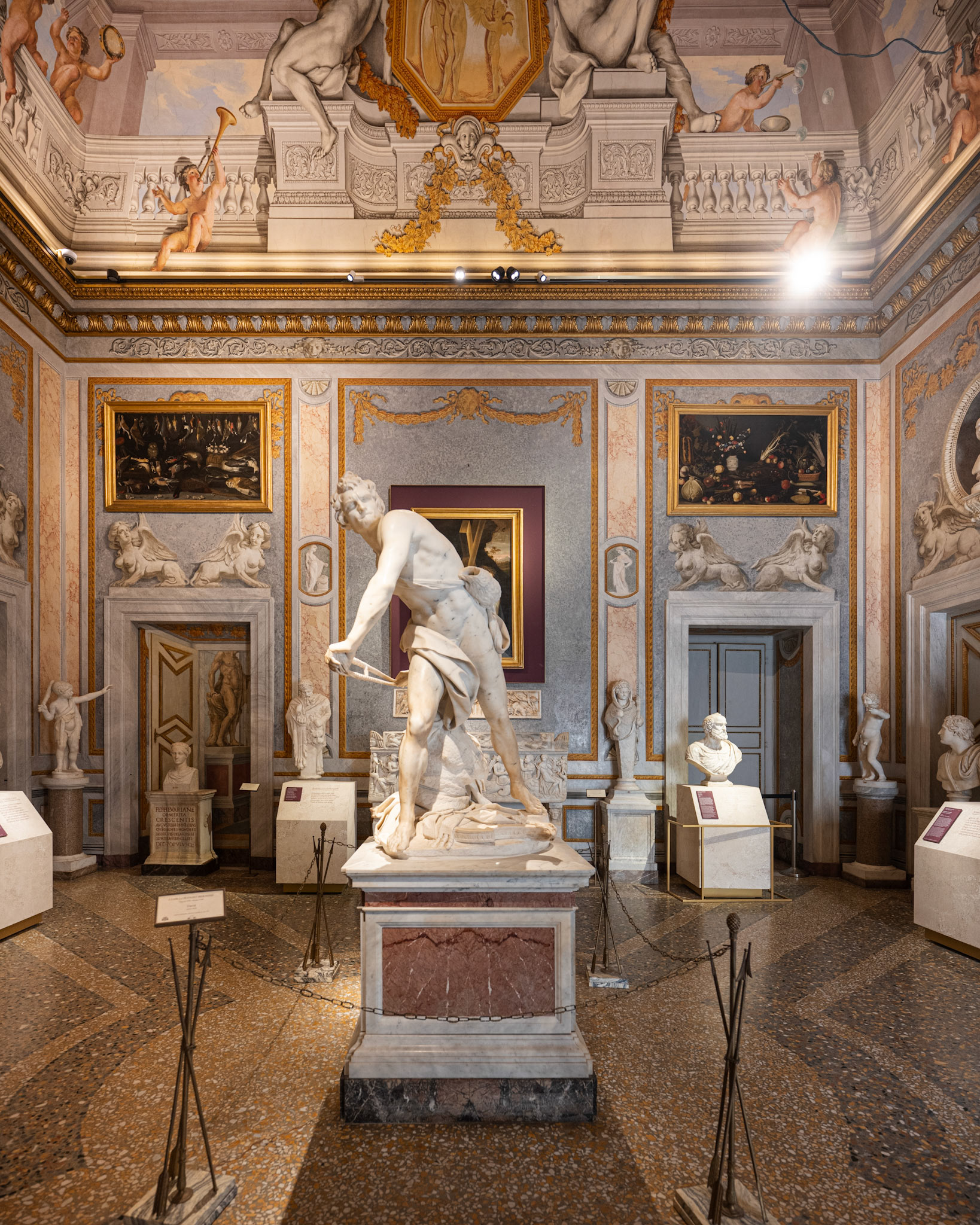
David by Bernini
Emperors' Room (Room 4, Ground Floor)
The Emperors' Room, named for its 18 busts of the Twelve Caesars and goddess Juno, features a blend of porphyry and alabaster sculptures. Its walls showcase mosaics, marble pilasters with gilded bronze capitals, and stucco cameos set against blue mosaic backgrounds. Six niches house classical sculptures, while the ceiling displays Domenico de Angelis’ paintings inspired by Ovid’s Metamorphoses and the tale of the nymph Galatea. At the room's center stands Bernini's Rape of Proserpina (1621–22), his first autographed masterpiece.
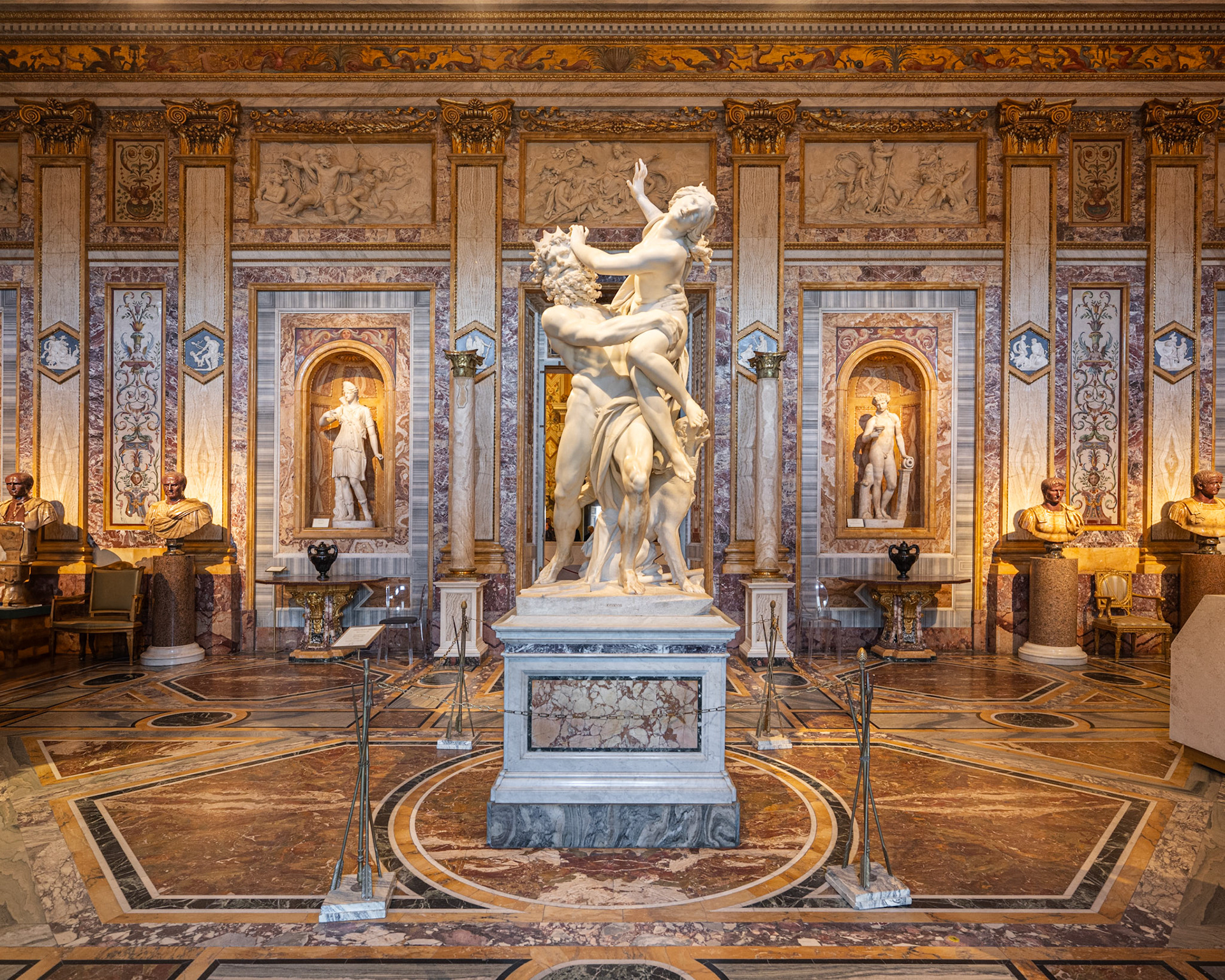
Rape of Proserpina by Bernini
Dido Room (Room 9, First Floor)
The Dido Room derives its name from the ceiling paintings, which depict key episodes from the story of Aeneas and Dido with, at the center, Dido’s Suicide. These five canvases were created by Austrian painter Anton von Maron.
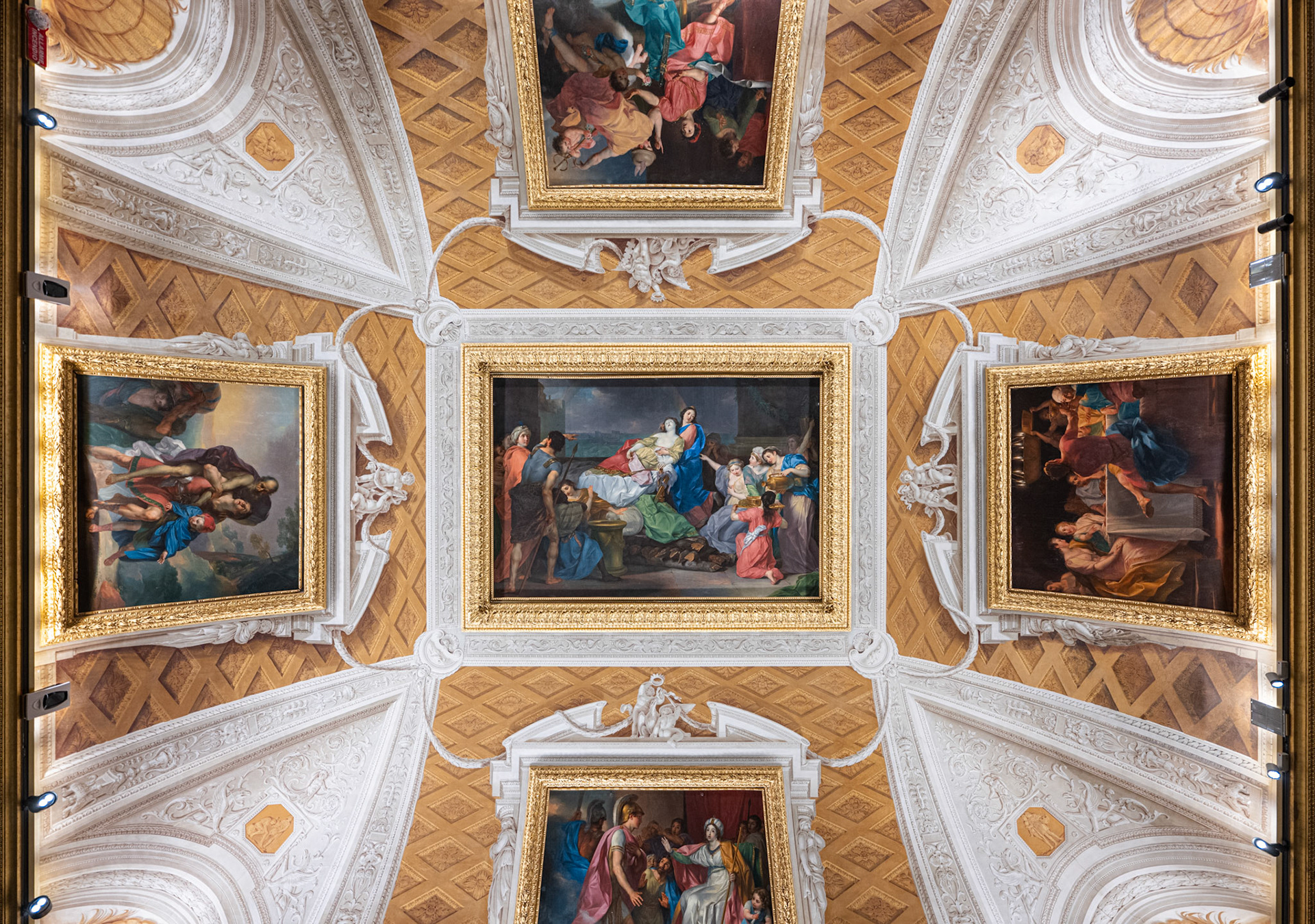
Dido Room, paintings by Anton von Maron
Hercules Room (Room 10, First Floor)
The Hercules Room, decorated in 1784 by Tyrolean painter Christoph Unterberger, features a ceiling series dedicated to Hercules, symbolizing Marcantonio Borghese's triumph. The room showcases 16th-century paintings, including Minerva Dressing by Lavinia Fontana (1613), which depicts the goddess Minerva with St. Peter’s dome in the background. At the center stands Nicolas Cordier’s Gypsy Girl, a marble and gilded bronze sculpture.

Hercules Room with Minerva Dressing by Lavinia Fontana (1613)
Loggia di Lanfranco (Room 14, First Floor)
Originally an open loggia overlooking the secret gardens, this room was enclosed in the late 18th century to preserve Giovanni Lanfranco's ceiling fresco, The Council of the Gods, painted between 1624 and 1625. The room showcases artworks from the 17th century, such as Ritratto di Giulio Sacchetti, painted by Pietro da Cortona in 1626.
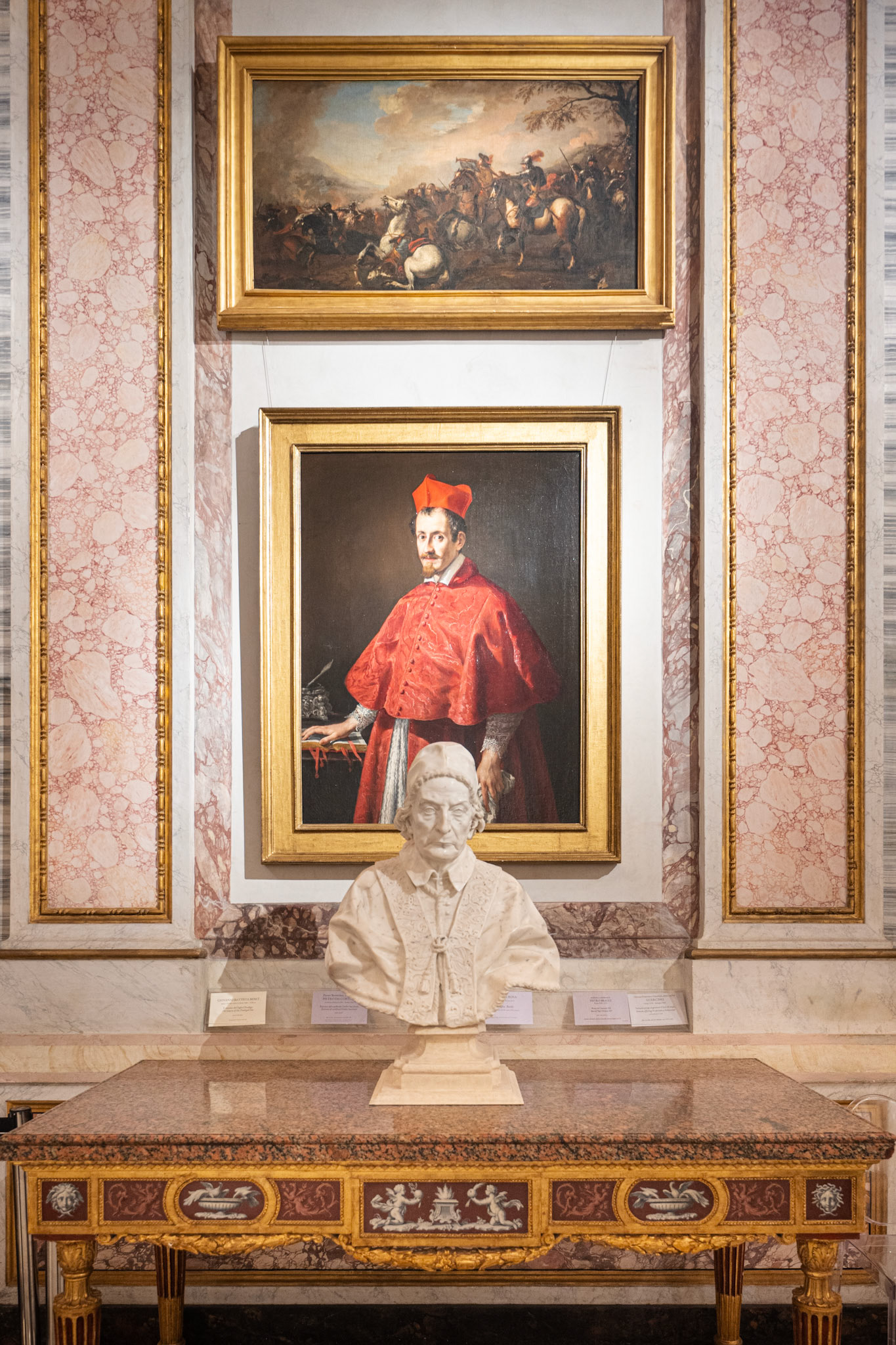
Ritratto di Giulio Sacchetti, Pietro da Cortona (1626)
Helen and Paris Room (Room 19, First Floor)
The ceiling of this room, inspired by themes from Homer’s Iliad, was painted by Scottish artist Gavin Hamilton between 1782 and 1784. At its center is The Death of Paris among satyrs and nymphs, flanked by The Judgment of Parisand Paris Taking Music Lessons from Cupid. In the center of the room stands Young Brunette with Boy and Dog, a marble statue with semi-precious inlays, attributed to the workshop of Giovan Battista della Porta. Some of its most well known paintings are The Hunt of Diana by Domenichino and Norandino and Lucina in the Ogre’s Den by Giovanni Lanfranco.
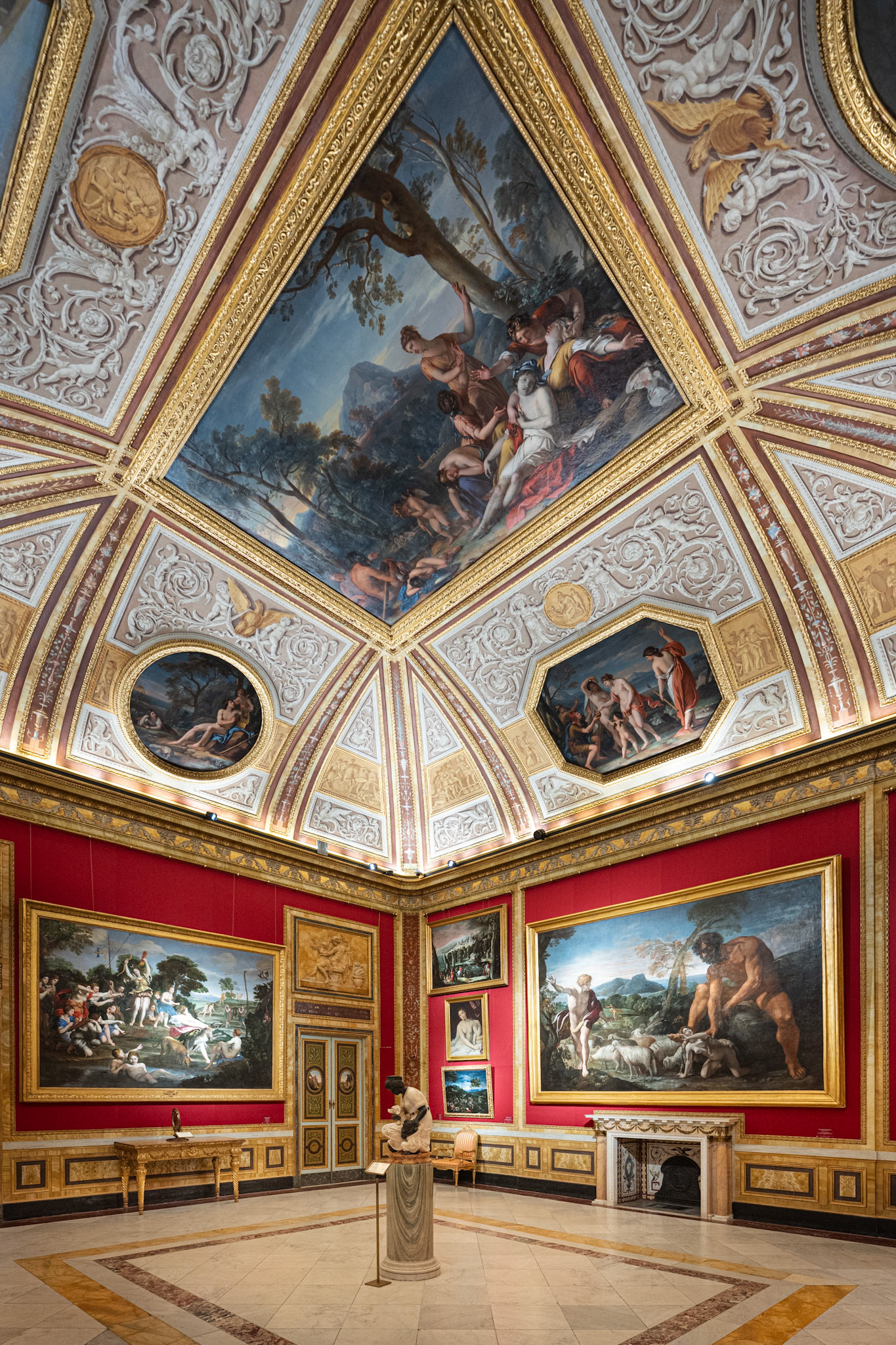
Helen and Paris Room with The Hunt of Diana by Domenichino
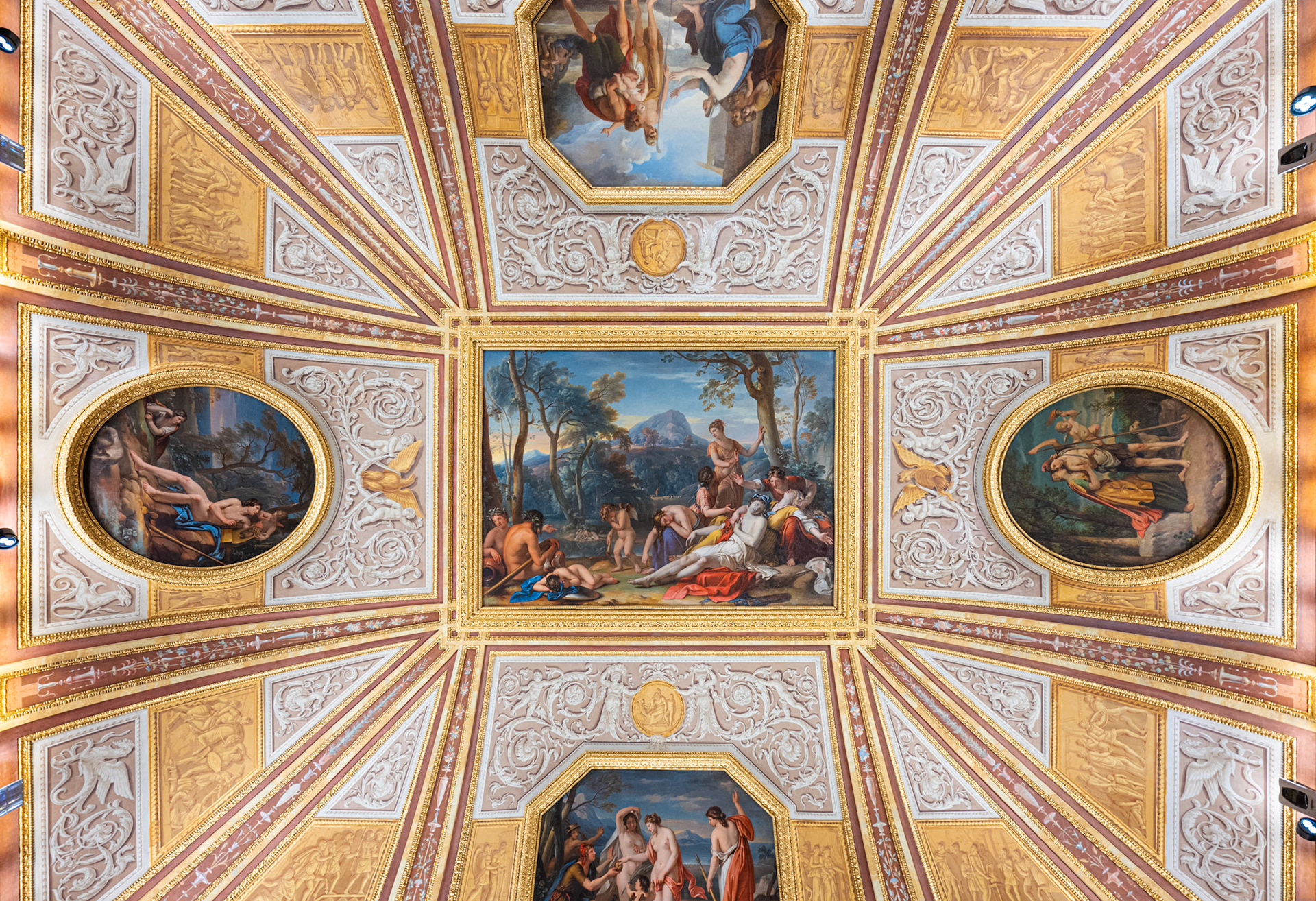
Helen and Paris Room with Death of Paris among satyrs and nymphs by Gavin Hamilton
Psyche Room (Room 20 - First Floor)
The ceiling of the room features paintings and monochromes by Pietro Antonio Novelli illustrating key moments from the tale of Cupid and Psyche. Surrounding these works is a trompe-l’oeil illusionistic gallery by Giovan Battista Marchetti. The room also contains the oldest ornamental fireplace, crafted in 1782 by Agostino Penna, adorned with a sacrificial scene and polychrome enamel tiles. Notable paintings include St. Dominic by Titian and Virgin and Child by Giovanni Bellini.

Psyche Room with ceiling paintings by Pietro Antonio Novelli
Vestibule (1st Floor)
The painting on the ceiling of the vestibule was created by Vincenzo Berrettini in 1788.
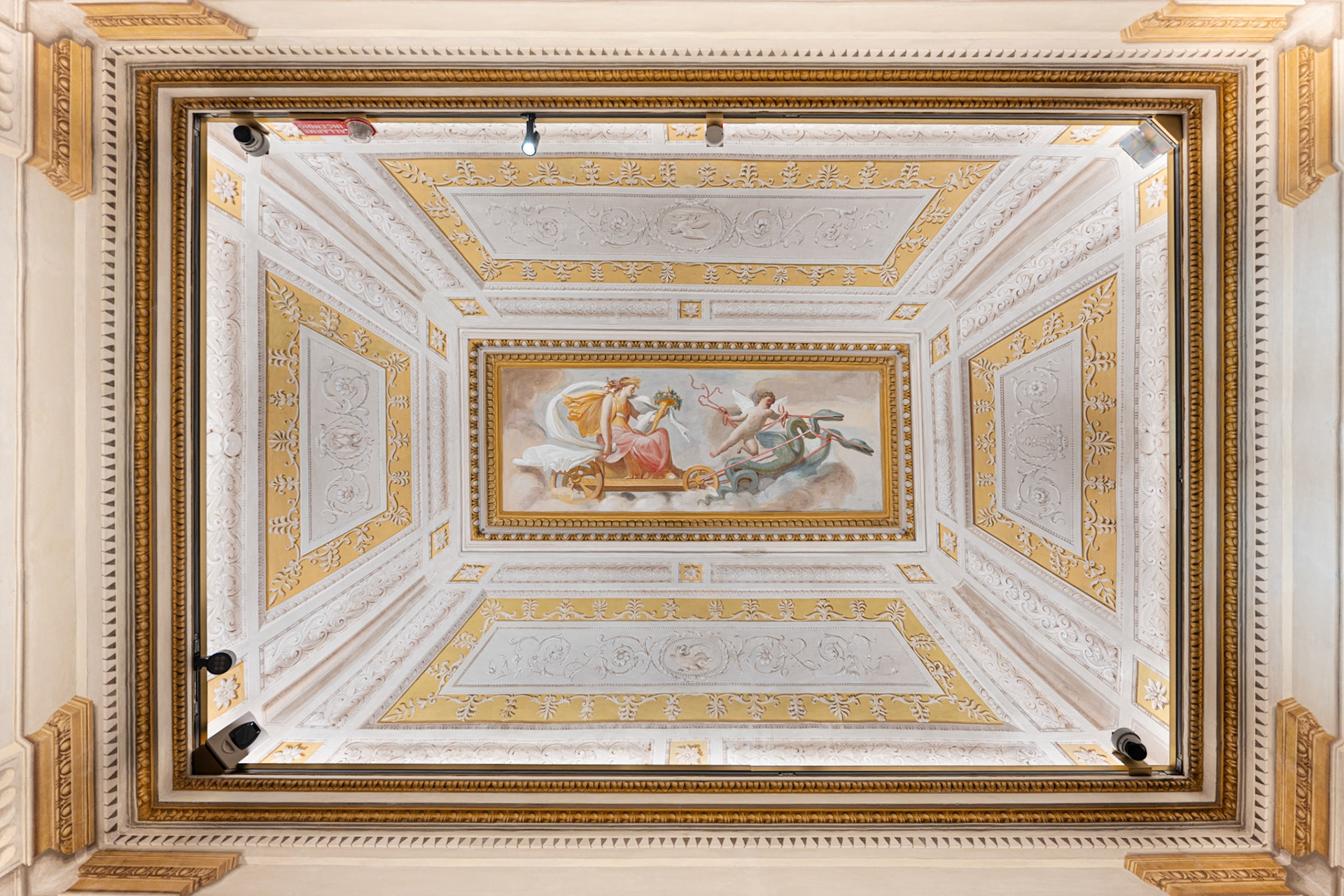
vestibule ceiling, Vincenzo Berrettini, 1788
You may also like